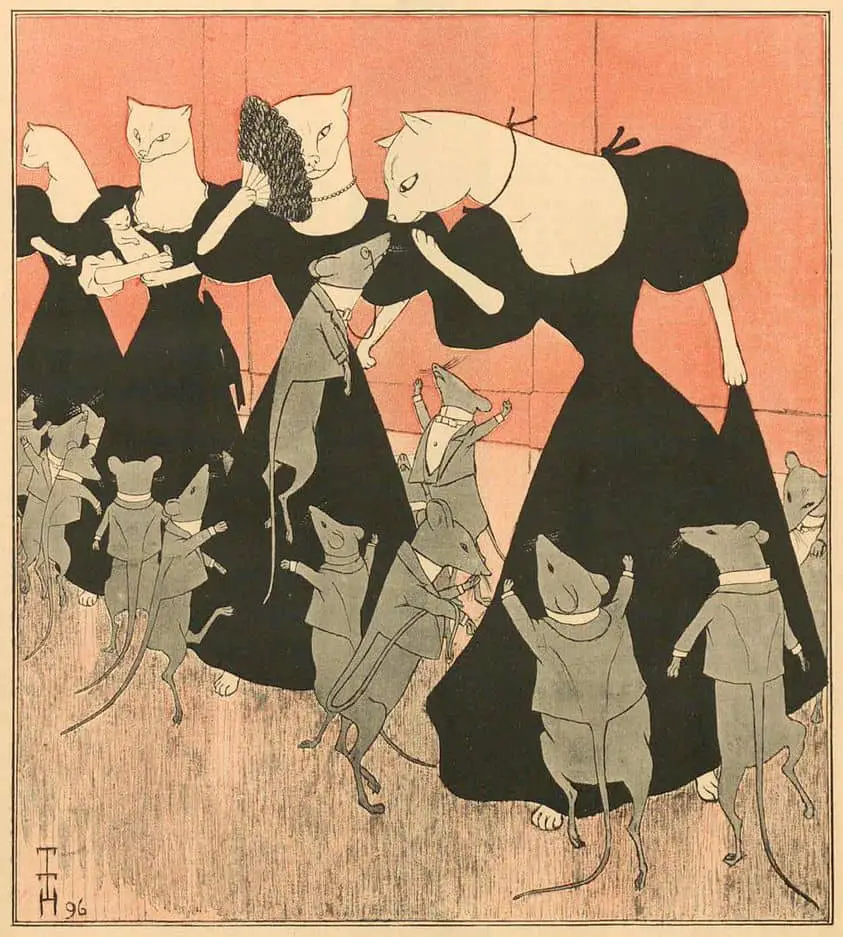The Cat Returns is a 2002 feature-length anime about a teenage girl who is transported against her will into a feline fantasy world after saving a cat’s life. Writer Aoi Hiiragi also wrote the script for Whisper of the Heart. This is a sort of sequel to that, where the main character writes this story. In written form, this is an ‘urban fantasy’, which literary agents have recently started to call grounded, contemporary fantasy (I believe it’s a rebranding thing).
Like a number of animated cartoons, The Cat Returns started out as a comic book series, though the film is quite different.
Japanese Title of The Cat Returns
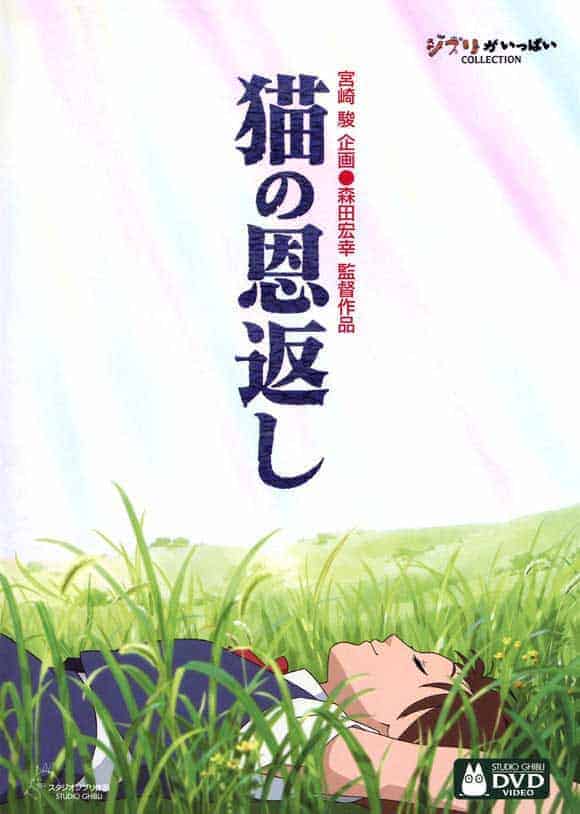
The Japanese title is Neko no ongaeshi, which literally means ‘The Cat’s Favour’. But that’s not a great translation because there’s no exact equivalent of ongaeshi in English:
It means ‘to return a favour’ or ‘to prove a gratitude’. In Japan, the word is perceived as rather antiquated and poetic and describes the space between action and reaction of gratitude. In this context ‘action’ can be described as: an invitation for a project, assistance to a solution for an abstract problem as well as direct support at the workspace. All this leads to a ‘reaction’ which may occur later in time, or have a different context. Even in Japanese it is difficult to comprehend this word which makes it open to imagination and potential.
Ongaeshi Artist Exchange
‘The Cat Returns A Favour’ isn’t exactly catchy, so I suppose that’s one reason we got ‘The Cat Returns’ in English. It’s also a sequel, so.
Themes In The Cat Returns
Returning favours is a strongly prosocial custom shared across cultures and across species. In some cultures, the rules of favour are more proscribed than in other cultures. In Japan, there are two times per year that you are expected to give thanks and gifts to everyone in your social circle. (More on Japanese gift-giving culture.) Japanese people are expected to bring back trinkets from a big trip after returning home. This nuisance custom means some Japanese people avoid telling all their neighbours they’re going on holiday at all.
The nuisance aspect of favours and gifts is explored in The Cat Returns. Though the concept of ongaeshi is specifically Japanese, many people can relate to the emotional labour surrounding reciprocity and gifts.
The Grateful Crane
For Japanese people, the concept is connected to a traditional folktale:
ONGAESHI is … connected with the traditional fairy-tale ‘Tsuru no Ongaeshi’, which translates into ‘The Grateful Crane’. After a crane gets rescued from death by a young man, it appears in front of him a second time in disguise of a human girl. The young man is being really helpful and takes the stranger into his house. To prove her gratitude the crane-girl secretly weaves cloth out of her own feathers every night to give them to her rescuer, who is surprised at the sudden gift but also really happy because her cloths sell easy at the market. Soon after that the girl appears to be sick. The man is worried and tries to figure out what is the reason behind her illness and peeks into her room at night. When he sees how she actually plucks out her feathers for his sake, she just flies away. This fairy-tale narrates about the fragility of give-and-take, thankfulness and gratitude.
This makes The Grateful Crane an ur-Story of The Cat Returns. There’s a long tradition of female characters making huge, health-sacrificing sacrifices for the sake of male characters in stories. (These stories are still popular today, even in picture books. Male characters make different kinds of sacrifices — non-domestic ones.)
In The Cat Returns, the gender has been flipped, but like the poor young man, Haru starts off dissatisfied with her lot. She finds a love interest in the fantastical creature. There’s transmogrification of course — a super popular trope in Japanese folklore.
Animals inherently contain a sense of mystery, and so I think it makes sense that we would use literal transformations into animals in stories to talk about parts of ourselves and our relationships that are difficult—or impossible—to explain.
There’s also shades of Rumpelstiltskin in The Grateful Crane, with a female character weaving magical fabric in secret, making her male family member rich.
The Crane Girl by Curtis Manley is a picture book version of The Grateful Crane.
SETTING OF THE CAT RETURNS
The Cat Kingdom looks a lot like popular depictions of Heaven.
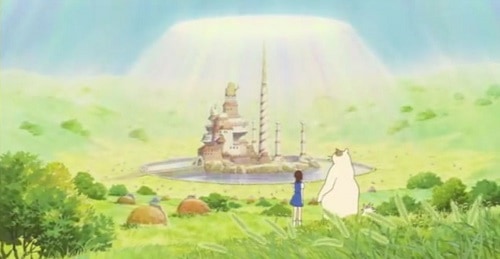
In the comic book series, the cats are dead all along and even the hungry cat Haru met as a little girl was dead.
The Cat Kingdom is an snail under the leaf setting.
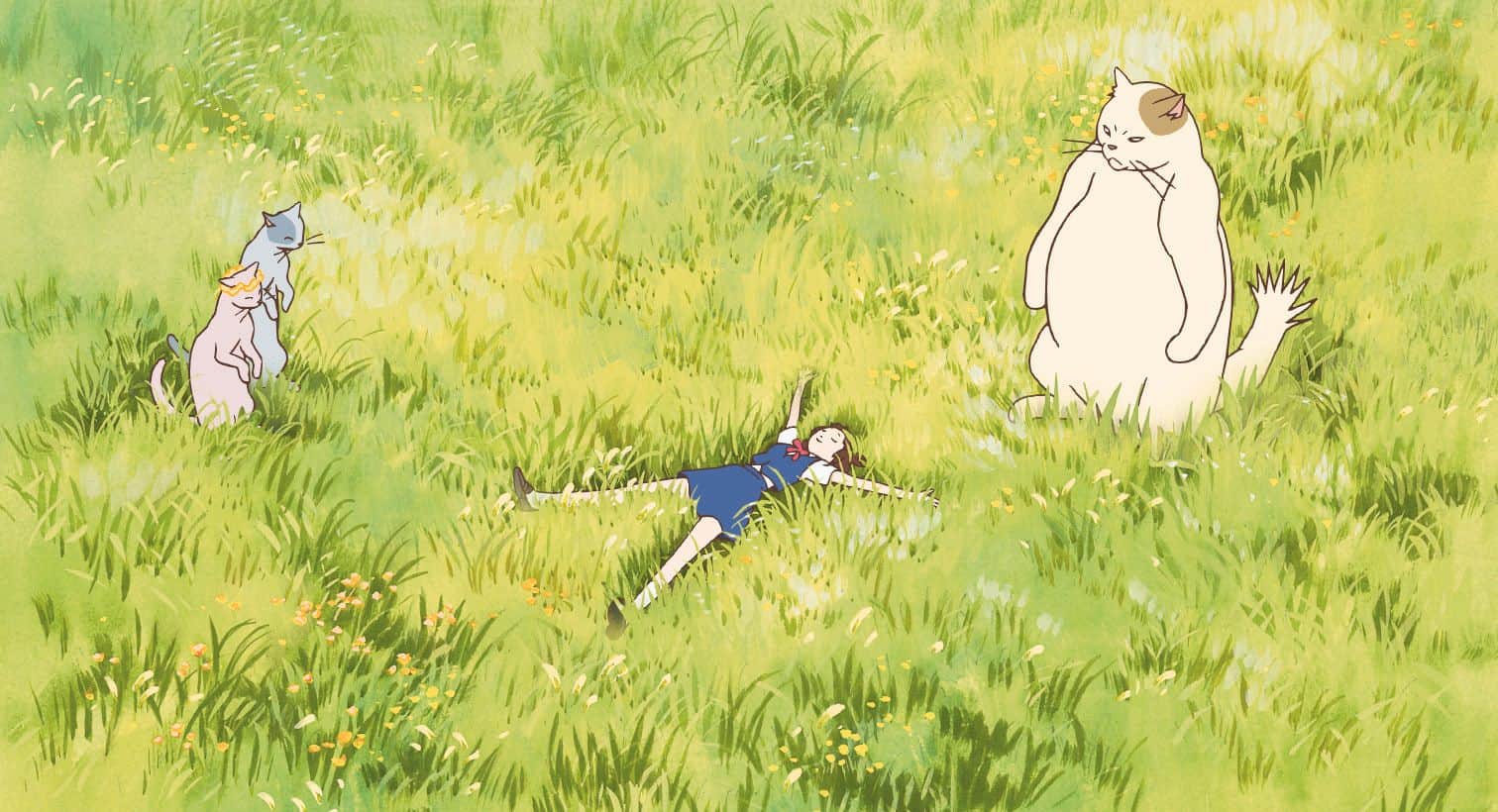
But we soon learn that this kingdom is ruled over by a maniacal cat with a third eye.
STORY STRUCTURE OF THE CAT RETURNS
SHORTCOMING
Haru is one of those hopeless, klutzy heroines who sleeps through her alarm. Bella Swan is a really popular example of the klutzy girl. Haru’s mother takes a hands-off approach, refusing to step in and wake her. Haru is late for school, and we assume she’s chronically late, that this is like any other morning. This is Haru’s psychological shortcoming. She is also revealed to be romantically unsatisfied — the boy she likes is going out with a younger student. In Japan, the age hierarchy is especially stark, so it’s a real kicker that the love interest is going out with a younger girl.
At first I thought Haru was younger. At 17, this character could pass as a 12-year-old, though by the end of the story she does seem 17.
Haru’s klutziness is very common for female YA characters. Does klutziness make them more likeable? They certainly seem less intimidating, and everyone identifies with embarrassment, so klutziness can lead to audience empathy. TV Tropes calls this trope Butt Monkey.
I place bumbling characters like Haru somewhere between low mimetic and ironic on Northrop Frye’s Displacement of Myth and Typology of Characters hierarchy, though Haru does have that flash of heroic brilliance when saving the cat.
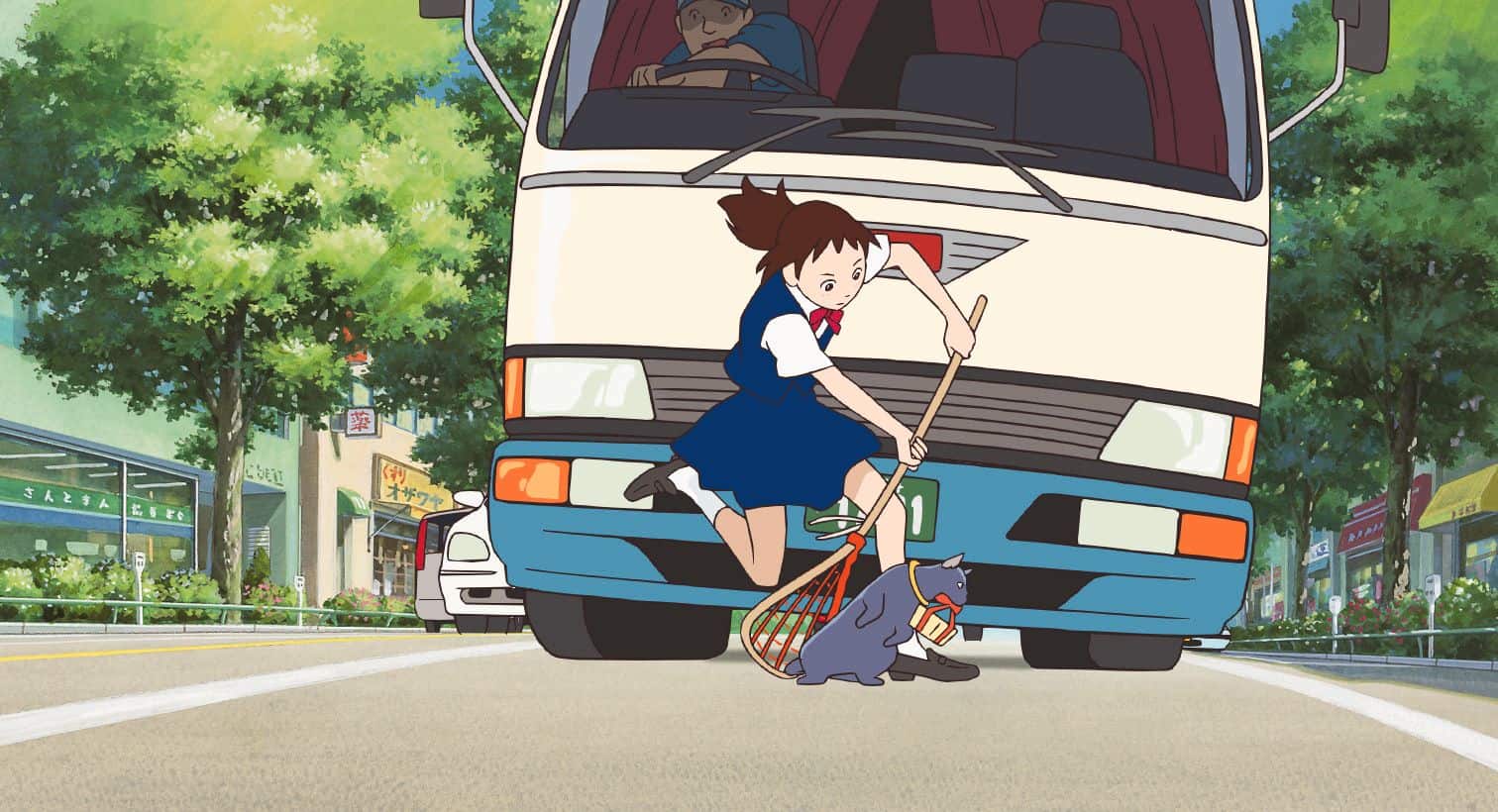
She’s a good athlete. Once she gets into the fantasy world she joins a group and rather than ‘save the day’ on her own, she is mostly saved by the Baron (love interest), though occasionally she has a good idea.
DESIRE
Haru wants a boyfriend. She wants to stop being the butt monkey. She does not want to go on an adventure to save the world or explore another land.
OPPONENT
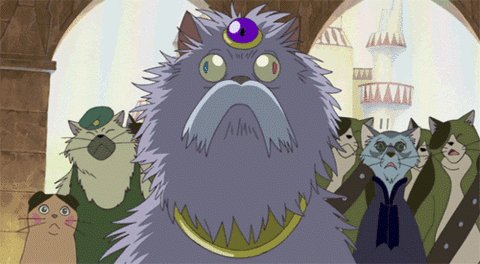
Haru is in opposition to her classmates because of her low social capital, but none of them is an out-and-out foe, unlike in lots of Western teen dramas. Western writers often craft a peer arch nemesis. Bullying is also a problem in Japan of course, but often in stories the high school is depicted as more of a safe haven than a big struggleground. Take The Girl Who Leapt Through Time, for instance, in which the science lab sparkles with magic. When polled, the overwhelming majority of Japanese high school students enjoy school. (But they are passive in their studies and have low self-esteem in general.)
80.4% of Japanese high school students claimed that they “enjoy school life”, compared to 77.4, 77.5 and 75.4% for America, China and Korea.
MEXT Report
Contrast this portal fantasy with a YA novel such as Dorothy Must Die, by Danielle Paige. The main character has major issues with a girl in school who bullies her for being poor. This dynamic is established before the cyclone which transports Amy to Oz, where she meets an entire cast of goodies, baddies and everyone in between.
PLAN
This is one of those stories where a bungling ordinary person finds themselves caught up in fantastic things. These types don’t often have proactive plans — their plan is to avoid whatever’s happening to them. In that case, the plans of their opponents are well-thought-out and successful.
The plan of the cats is to shower her with gifts of the sort they themselves would like to receive in return for the gift of life.
BIG STRUGGLE
There are big struggles all the way through this story, starting with the minor embarrassment of being caught sneaking into Japanese Literature class late, then the humiliation of falling over a stick in front of her love interest.
The jester scene at the banquet is one of the first big big struggles, where we learn what’s at stake — this guy really is a Caligula type with complete disregard for life.
The scene in the maze offers some great meta-commentary, as the opponents watch our heroes from above, commenting on their progress like the two old men in The Muppet Show.
There is actually so much battling that I lose interest after a while, which is a personal preference against too much action.
The final life and death situation occurs when Haru must find her way back to the real world. The Cat Returns utilises flying — in line with every other Studio Ghibli production — the animators are very good at creating aerial views. Does flight equal freedom in this case? I’ll argue yes, because although Haru is being transported down to Earth rather than up to Heaven, she now knows who she is and is free to be herself.
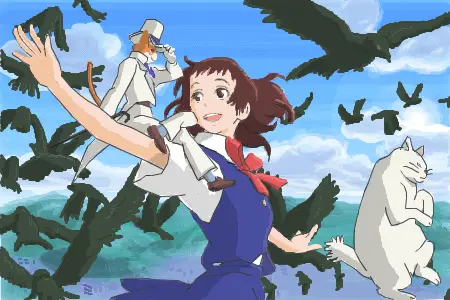
ANAGNORISIS
Haru has become more responsible after her adventure in the cat kingdom. She’s had a near brush with marriage, and faced the possibility of never coming home again. This seems to have hastened her personal development. Haru is also sporting short hair.
‘Haru’ means ‘spring’ in Japanese. Spring is the season of change. With a symbolic name like that, it is fully expected that this is a coming-of-age story.
The main message in this film is fairly trite — believe in yourself and you’ll be a success. TV Tropes call this an ‘Aesop‘, because it’s such obvious and cliched advice. (Though perhaps not so obvious if you subscribe to the idea that there is no ‘essential self’.) In any case, this message is common in children’s stories.
NEW SITUATION
Haru is no longer interested in that boy from school — she’s rather creepily got a new crush on the older cat guy from the fantasy world.
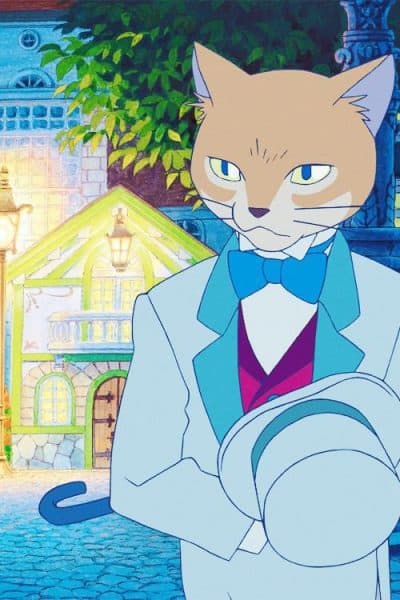
Leaving that weirdness aside, Haru is now far more mature than she was — almost too mature to be in school. When she’s released from the high school environment, we trust she’ll do well in the world. (Or perhaps she decided to turn into a cat to be with The Baron?)
FURTHER STORYTELLING NOTES
Subversion and Inversion of Tropes
- Muta appears to be a ‘fat bastard’ but this trope is inverted when he turns out to be loyal to his friends.
- Ravens are not terrible in this story. Usually they’re foreshadowing death, but here they are helpful creatures who will come to your rescue even after you’ve insulted them.
- Haru’s life gets worse, not better, when she becomes a princess. (Most modern princess stories are inverted — unlike in traditional fairytales, which are classic examples of The Marriage Plot — the plot ends when the girl gets married to a prince, because her life will be perfect from now on and the story is therefore over.)
Meta-humour
Scott Dikkers (founder of The Onion) has created a taxonomy of humour. Meta-humour is one of his 11 categories. There’s a lot of slapstick and wordplay in The Cat Returns (though some of the wordplay is lost in the English dub). The Cat Returns also offers some good examples of meta-humour, which I figure is one of the more rare, as I have less success finding examples of it.
- When the opponents offer commentary on Haru and co’s success in the maze, that is a form of metahumour. The opponents are aligning themselves with the audience. We, too, are watching them from above.
- “Enough of your cheesy light show!” Muta says to The Baron, as The Baron’s house lights up during the setting of the sun. This joke strikes me as odd — I would have taken the beauty of the setting sun at face value. I wonder if the animators wondered if it was too much, and there was a discussion about whether to cut back on it? In any case, it’s an example of metahumour, reminding the audience that this has been created for the benefit of an audience — that audience being Haru, and also being us.
Passive Tea-drinking Scenes Transformed
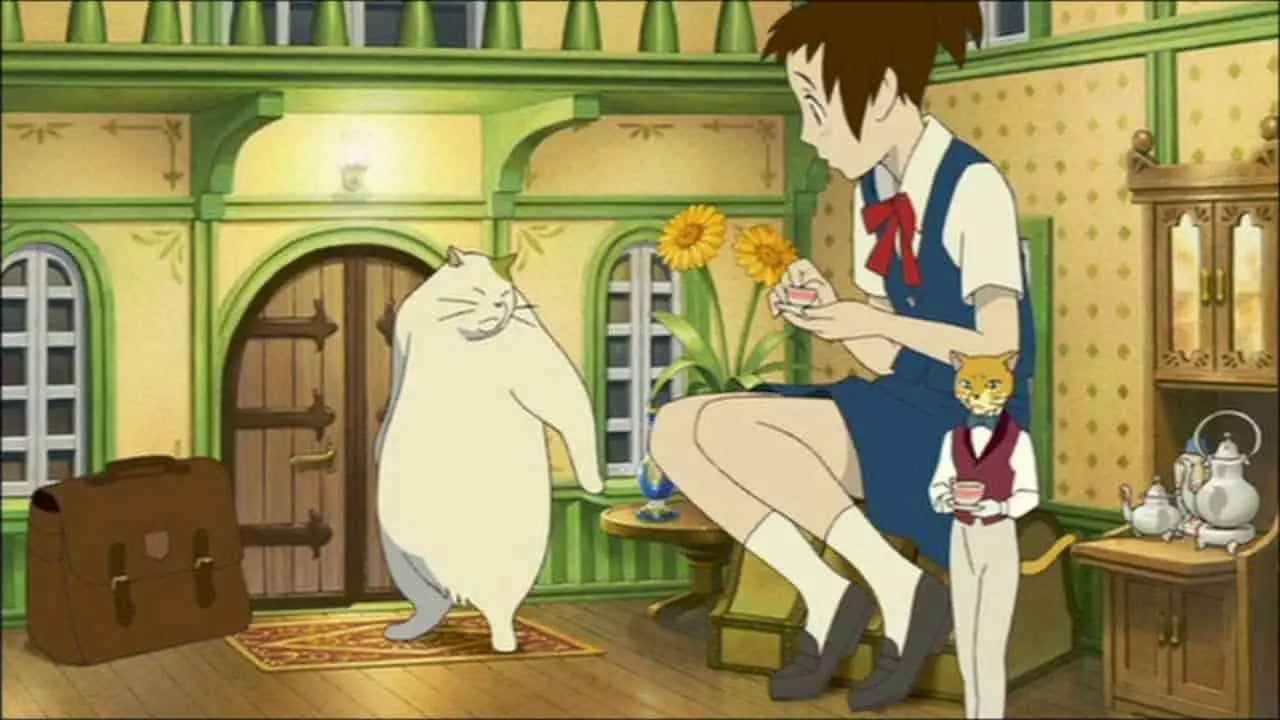
The Spring 2018 issue of the SCBWI Bulletin has the following writing advice from Joelle Anthony:
The most common scene I come across when working as a freelance editor is the one where the characters are sitting around talking. Generally, the author adds in a cup of tea, a cocktail, or a lovely meal as the “activity” the characters are participating in while they talk. And talk. And talk. Occasionally, the conversation escalates into a heated argument, or turns embarrassing and awkward, but regardless of how the scene plays out, having characters sit around talking is usually boring for ht reader, and it rarely moves the story along int he way the author is hoping.
Why do we do it? Two reasons. First, it’s easy. […] The second reason we do it is because that’s how we do things in real life. […]
Have a look at each scene as you’re revising. If it reads like a slice of life, ask yourself if adding an activity might take it to the next level … one that’s more interesting and also serves the story and characters in a more productive way.
Joelle Anthony
My experience in writing groups is that we all tend to write a sit-down-and-chat scene early on — usually around chapter two. This chapter then needs to be cut entirely. With stories set in a place like Japan, drinking (green) tea is such an important and common custom, it might actually seem weird not to include a tea-drinking scene.
Joelle Anthony offers some suggestions for avoiding boring tea scenes, which the creators of The Cat Returns have utilised:
- Physical activities that mirror the mood of the scene
- Activities which are the opposite of what’s going on
- Something that might change the mood of the scene. If the characters are fighting, could doing this activity lead them to laughter, and would that be useful to you?
- Opportunities for combining scenes are excellent choices. For example, if an upcoming scene is one of these characters working in the garden, combine the two scenes so this conversation interrupts their work (adding tension).
During the obligatory tea scene with The Baron, Muta and the raven are engaged in a dual. They fling insults at each other, adding both action and humour. Finally, Haru is literally carried out the door by cats, adding visual interest. Also, the fact that this takes place in a beautiful, ornate, dollhouse type environment helps. Interesting scenery always helps with the boring scenes.
Light and Dark Symbolism
There is no night-time in the cat kingdom, which is partly what makes it seem like an snail under the leaf setting. The real world, though, doesn’t rest at night. Creepy things happen at night. Light usually suggests hope, renewal, or intellectual illumination. Darkness implies the unknown, ignorance, or despair.
The lightness of the cat kingdom is subverted, as it is revealed that the place is not a utopia at all.
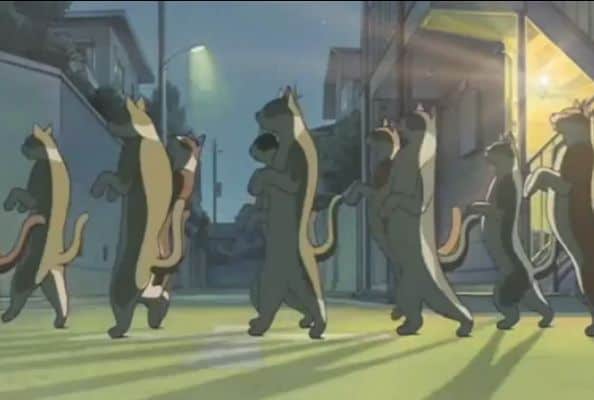
Am I Going Mad?
In urban fantasy the author is juggling realism against ridiculous, unbelievable events. What would you do if you saved a cat and it stood up and talked to you? What would you do if you noticed the weeds in your front yard had grown a metre longer overnight?
The number of lampshading options for character surprise at odd events feels like a closed group:
- Haru’s bestie asks if she banged her head.
- Haru’s mother assumes she’s been working too hard and goes back to bed.
This is known as the Pinch Me trope. (There doesn’t have to be literal pinching.) Other options utilised in storytelling:
- The character assumes they are dreaming (very common)
- Or assumes they are hallucinating (very similar)
Anything outside these obvious ones probably have to be specific to the story. Can you think of other examples?
OTHER STORIES ABOUT FELINE COMMUNITIES
- Forest: Journey from the Wild by Sonya Hartnett (2001)
- Varjak Paw by S. F. Said (2003)
- Warrior Cats series by Erin Hunter (starting 2003)
